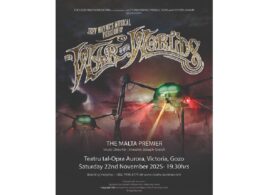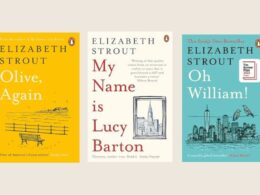The exhibition opened last Saturday, April 12 at CREA Cantieri del Contemporaneo in Venice. The award is open to artists of all nationalities working in the field of visual arts who were encouraged to submit work ranging from textiles, painting & printing, sculpture and video art to installations, land art, performance and new media. From over 4000 applicants, an international jury chose Maltese artist Mario Abelo and his painting The Eternal Hunt as the overall winner.
The Eternal Hunt – an oil on canvas – was a response to Watteau’s Rendez-vous de Chasse, a scene of a hunting party, an apparent idyllic moment of leisure and friendship. However, in his work Abela delved beneath this surface, considering the invisible dichotomy between pleasure and pain and highlighting the darker realities that often coexist with moments of celebration.
What was it like winning a major international contemporary art competition in Venice, and how did this impact your perspective on your artistic practice and its potential reach within the art world?
Winning a major international contemporary art competition in Venice was, of course, surprising. I had already participated in international calls and been a finalist or shortlisted before, but this is my first win and from such a large field of artists. One does not need rewards to motivate them to continue working on what they love to do most, but it certainly gives an extra boost of confidence and will to continue pursuing my passion.
What are the key themes or concepts that you explore through your practice? How does your art reflect your personal values, beliefs, or worldview?
The key concept that I like to explore mostly is the pre-human condition, where humans are not above any other form of life in the universe. This stems from my personal understanding of the world. I consider myself an existentialist. My personal perspective of the world is from the universe looking inward, not from the world looking outward. In my opinion, if any human being practiced this, we would live in a better world since the importance of the human being is reduced to the same level as any other living organism. Like any other existentialist, I navigate the world through my own understanding and free will. Therefore, the world that I create on my canvases depicts thoughts and feelings as I navigate this real world. I always see my works as a parallel universe where the human is part and parcel with nature, without any prejudices and without being above any other form of life.

What is the role of art in society, and how do you see your work contributing to that role?
Art is always a reflection of the place and time in which it is produced. Chaos and uncertainty influence artists in one way, while times of peace and prosperity influence them in another. We are living beings, and whatever happens to us and around us will show in the way we interact with and navigate the world. My work is simply doing this: reflecting a personal view of a human being navigating a particular portion of the world in a particular period of time.
How do you see your own work comparing with that of the other artists who exhibited with you during CREA OPEN 2025? How do you define “success” as an artist, and what are your measures of artistic fulfilment?
Each of the artists in the show speaks their own visual language, aiming to convey something to the world. There were 39 artists chosen to particpate in the show, each with their unique approach. The level was very high, and I congratulate all the participating artists. We are all winners.
Personally, I prefer not to dwell on the word ‘success’ much because it carries a heavy weight. Artistic fulfillment is more appropriate since this can only be achieved by simply waking up and being happy that you are alive and can’t wait to go to the studio and work.










